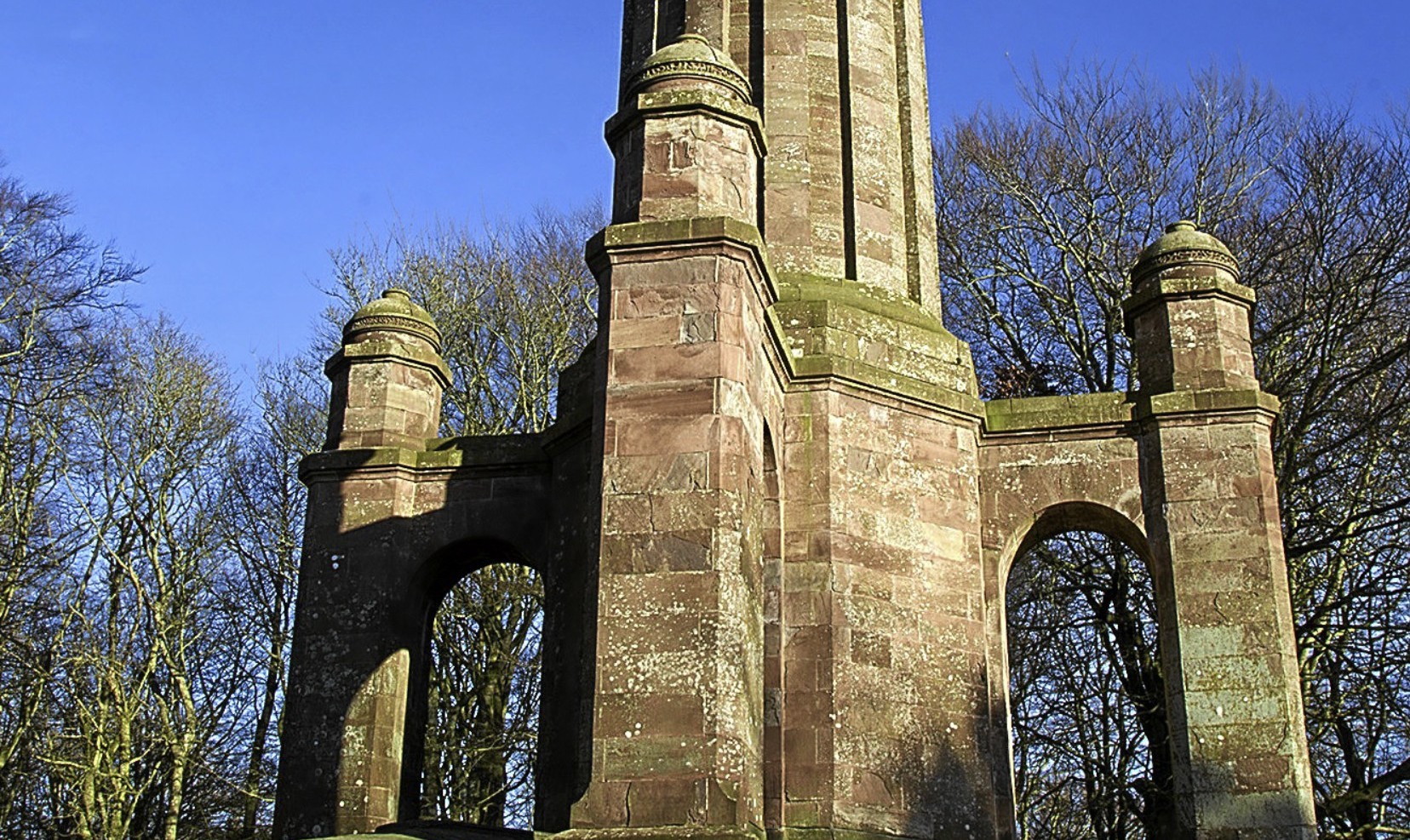It had been several years since I had driven on the B961 back road to Dundee via Friockheim and Newbigging and onwards to Monifieth.
It was a fine, bright morning and I’d forgotten what a grand view you get once you reach the crest of the hill after passing Carmyllie Village Hall.
You’re looking across the Firth of Tay to the Fife coast and Tentsmuir Dunes and Forest. Regiments of cumulus clouds were blowing in billowing waves across the sky.
I always look out for the sign at the road end of the evocatively named farm of Dustydrum.
It sticks in my mind because 45 years ago I bought an Allen Scythe grass cutter from the farmer there. It was a beast of a machine with a mind of its own. It cut just about any undergrowth I set it at but it tended to go where it wanted to and not where I pointed it.
Live and let live
Look up to the left once you’ve passed Kirkton of Monikie and you’ll see the top of a monument almost obscured by the trees that have grown up round it in the 50 and more years I have driven the road.
It is the Panmure Testimonial Monument, otherwise known as the Live and Let Live Memorial.
In 1829 the crops failed and farmers faced ruin and being unable to pay their rents. The laird at the time, Lord Panmure, suspended the rents for his farms until better times. In 1839, in gratitude, his tenants erected the memorial on Camustone Hill at their own expense
The hill takes its name from the Camus Stone or Camus Cross, a carved Pictish cross said to have been erected to celebrate the death of Camus, a Viking chief killed at the Battle of Barry in 1010 when a Scottish army led by King Malcolm II defeated a Viking invasion force.
Strangely, this links in with the Stone of Morphie, an uncarved standing stone at the entrance to the farm of that name above the Lower Northwaterbridge, which crosses the River North Esk carrying the A92 between Montrose and St Cyrus.
Growing up in Montrose, the story I knew was that the bones of a giant Viking warrior are buried beneath the Stone.
The tradition is that it was a son of Camus, who died alongside his father at the Battle of Barry. Strange to think that wee, hairy Picts went to the trouble of carting a dead giant from a battlefield supposed to have been in the vicinity of present-day Carnoustie High Street to bury him near St Cyrus.
Medieval history is littered with conundrums but it hardly seems likely they would have erected a great, muckle stone over the bones of just an orra, hairy Viking raider.
Duck deception
Mallard ducks are early nesters, laying from February to May. Walking last weekend at the Burn House near Edzell, Inka disturbed a duck out of the foot of a thick shrub no more than 20 paces from the front door.
I had a peer underneath the foliage and there was a nest of very newly hatched ducklings.
I didn’t poke around any more for fear of causing the duck to desert the nest, so I don’t know how many chicks there were but mallards will lay up to 16 olive-buff eggs.
The mother duck wasn’t far away, however and as I got to my feet she flapped off in front of me, dragging an apparently injured wing – classic deception behaviour to draw a predator away from her chicks.
The ducklings leave the nest soon after hatching so the mother duck will already have led her trail of black and yellow chicks down to the burn that gives the house its name.
It’s not the first time I’ve found a nest so close to human activity. I’ve had a mallard nest in a clump of oxeye daisies in a border beside the house.
There were dogs in about the garden, kids playing, the noise of lawnmowers and cars passing, yet still the duck produced a healthy brood of ducklings.
I’ve heard it said that ducks and pheasants are able to suppress their scent while sitting on eggs. If it’s true, it must have been sheer bad luck that Inka detected this one.
Blue on yellow
To counteract the unseasonal chilly weather look out for splashes of spring colour on walks, such as clumps of little golden saxifrage and marsh marigolds along the streams and celandine, whose petals open when the sun shines and close when it turns dull.
There’s a patch of blue forget-me-not outside the back door. It’s a weed in the garden and I’ll pull it out when it has finished flowering but it’s a wild flower in the countryside.
The bluebells you’ll see just now are Spanish bluebells, an invasive introduction which are in danger of crowding out the later-flowering delicate English bluebell or wild hyacinth.
Every spring I look out for the bank of wood anemones in the picture, which brighten up a woodland corner of the road from Edzell to Fettercairn.
